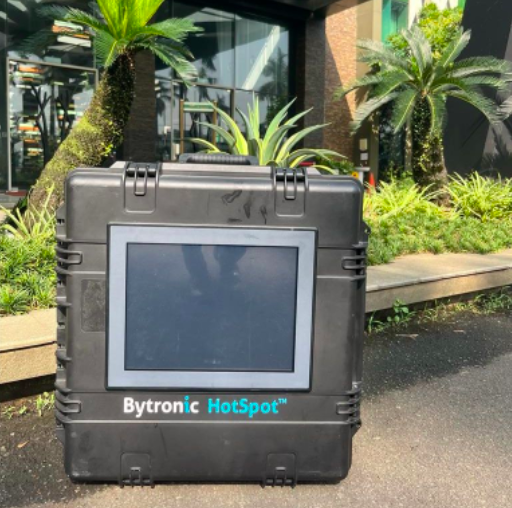Our founder John Dunlop recently visited Indonesia to enable a global food manufacturer to reduce waste and knock-on costs caused by downtime from contamination.
The factory packages food and hygiene products in sealed pouches, shipping out everything from soy sauce to shampoo. However, it was experiencing issues when trying to ensure that each pouch was correctly sealed.
This was causing both damage and hygiene concerns for customers. If a pouch wasn’t sealed correctly, the product could leak out in transit and contaminate an entire delivery or, worse yet, the production line – leading to downtime for decontamination and stock disposal.
The factory produces three pouches every second across seven production lines – that’s 1.8m per hour – so when the line stops, every second counts.
John Dunlop explains how the HotSpot SealCheck thermal camera system can counter these sticky situations, prevent problems and drive down costs.
“The manufacturer found they were producing much more waste than they wanted – mainly because there are all kinds of variables in the packaging process. Using heated jaws, their machines plant a pouch to seal the sides and the backs of each product. But there are a lot of variables going on with this: temperature, the jaws themselves, the pressure applied, the speed, the position, the material that they’re making, the pouches – the list goes on and on.”
John took Bytronic’s portable trial kit (pictured above), which has everything needed for making accurate readings in one place. Here, it allowed him to clearly see the distinction between the baseline temperature of the pouches and the temperature of the plastic after being sealed – which is 175 degrees. This allows us to identify and isolate any pouches that were incorrectly sealed in as little as 50-100 milliseconds and remove them from the line before they leaked or ruptured – preventing product loss and eliminating unnecessary downtime.
John added: “The critical thing to note is that we’re using a non-contact inspection method that can see things that humans simply can’t. Operators can’t just look at a pouch and tell that it’s properly sealed as a human because you can’t see the heat in the seal. So, their operators would run samples, typically picking up a pouch and squeezing it or put it in a clamp to see if it’s properly sealed.
“That brings its own problems. Let’s say you’re testing one in every 1000 packs, then it might be that you just happened to choose the one that was properly sealed and the remaining 999 of them were not properly sealed – it’s entirely possible.
“We don’t need to do that. We’ve got a thermal non-contact method for inline inspection that made it clear to see the failures on the production line and how we can work with them to integrate an automated solution to this costly problem.”
For more information about Bytronic’s HotSpot system and to discover if it could benefit your business, click here.

